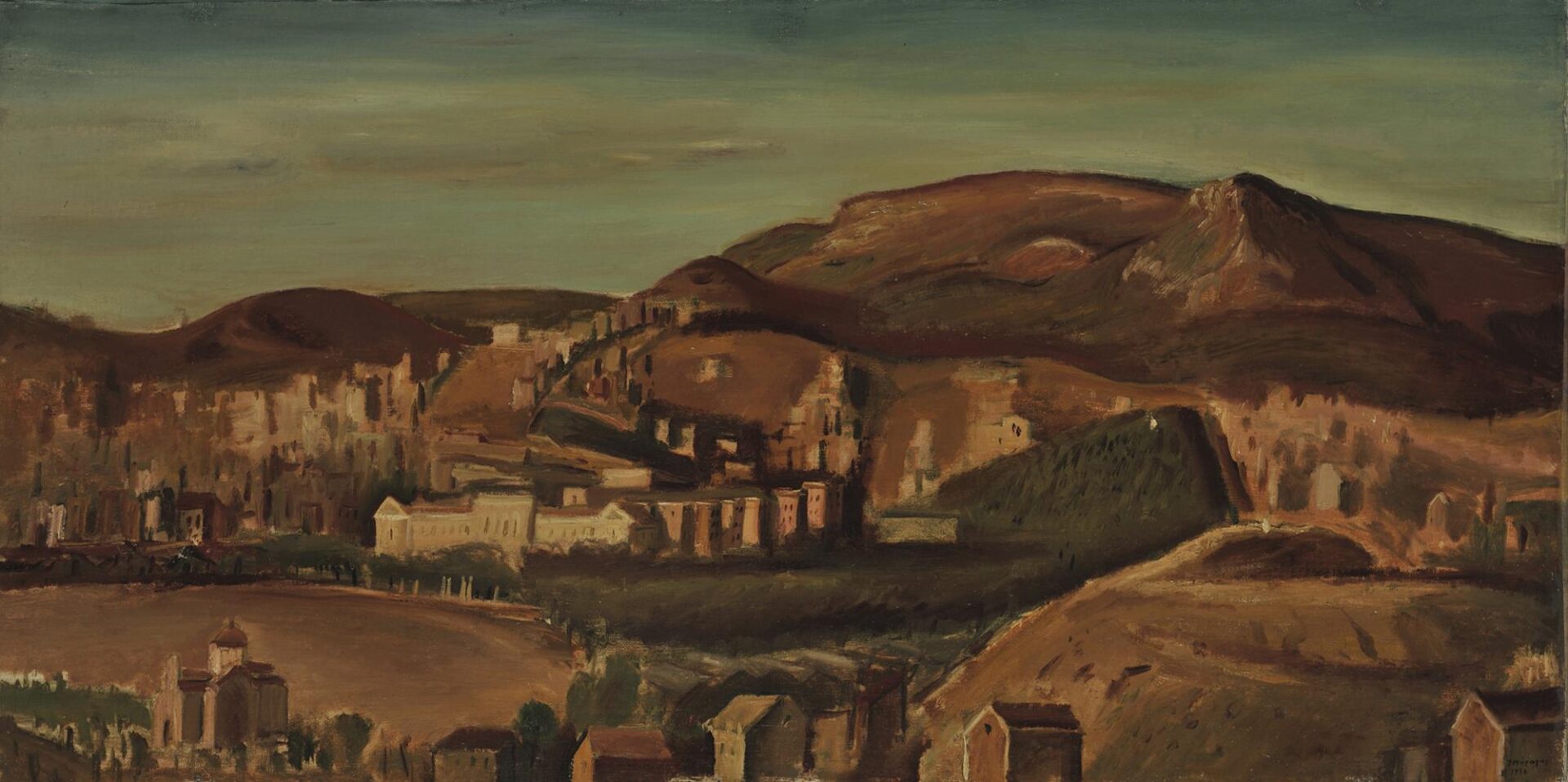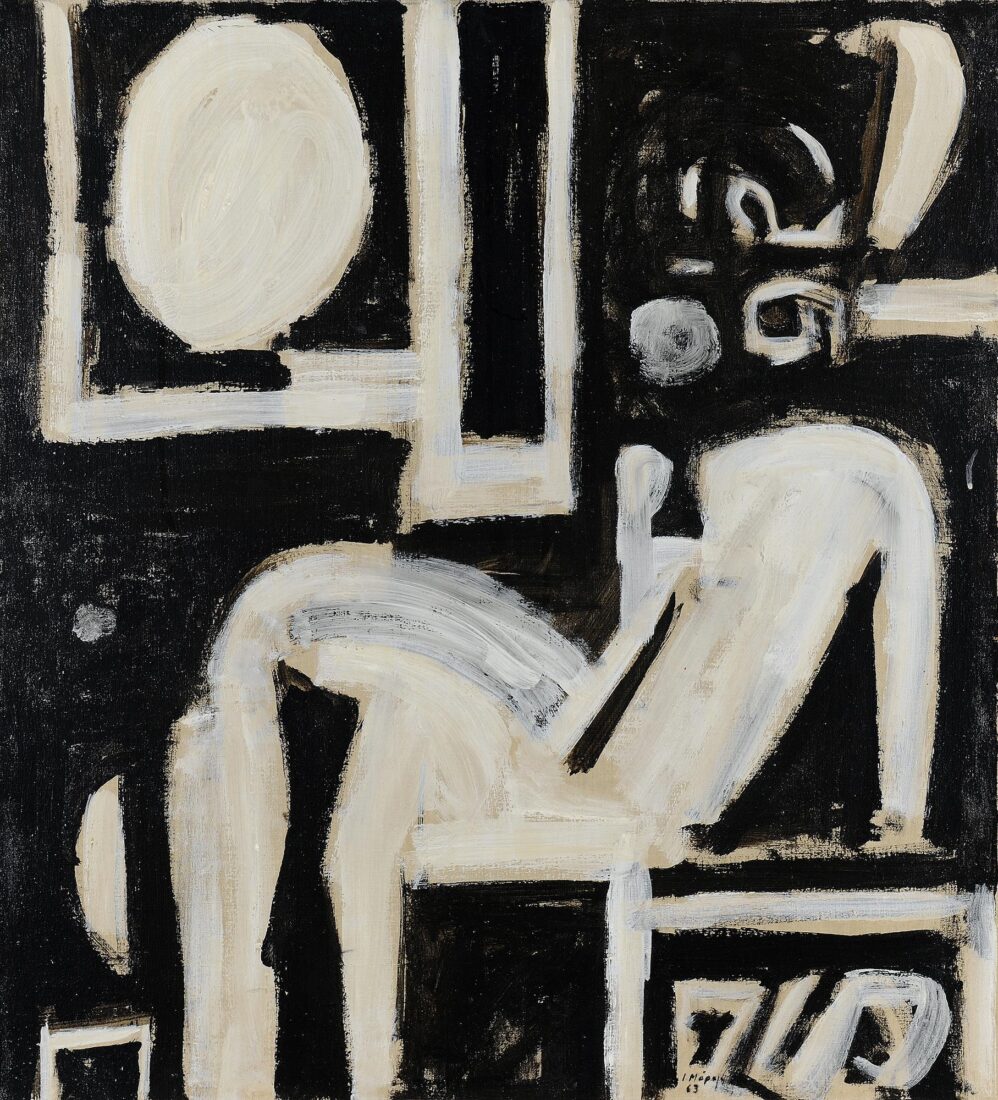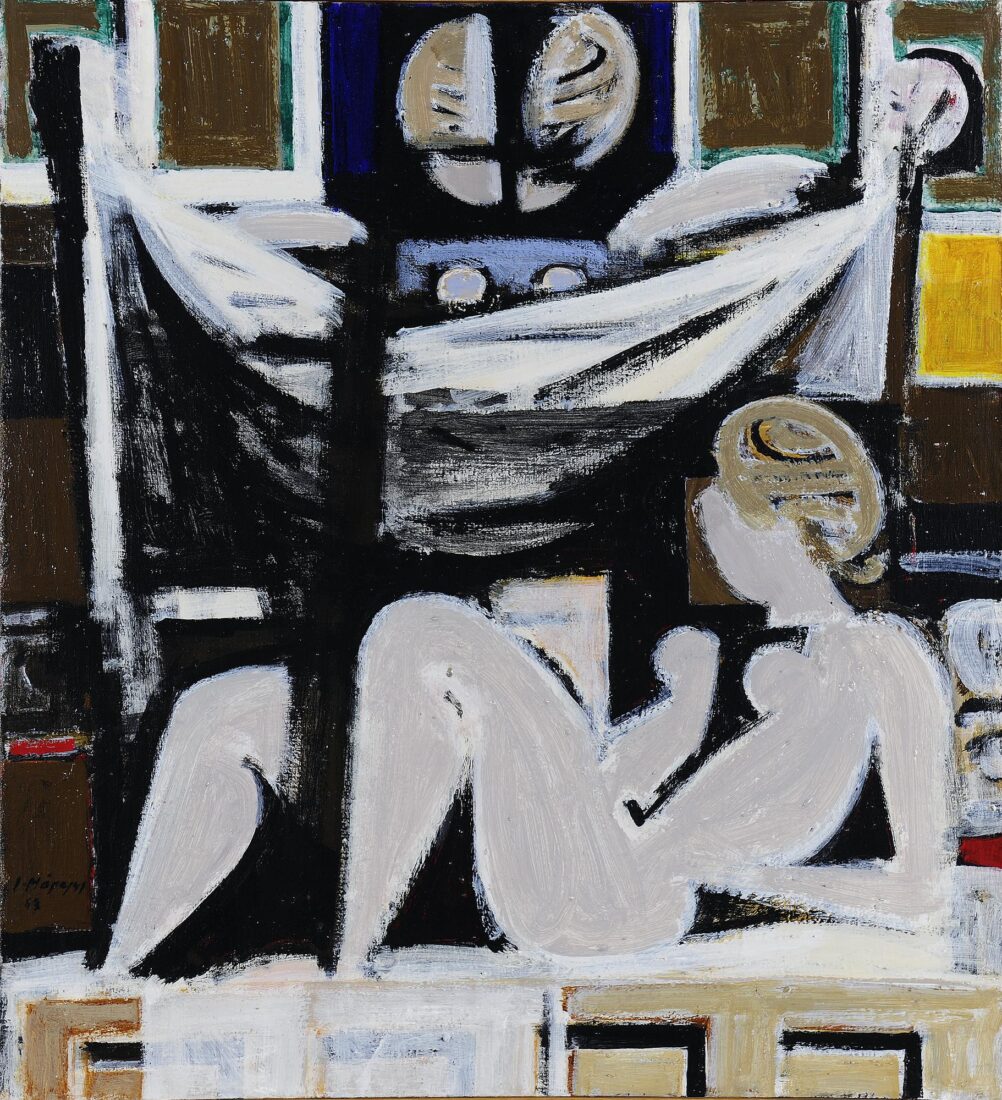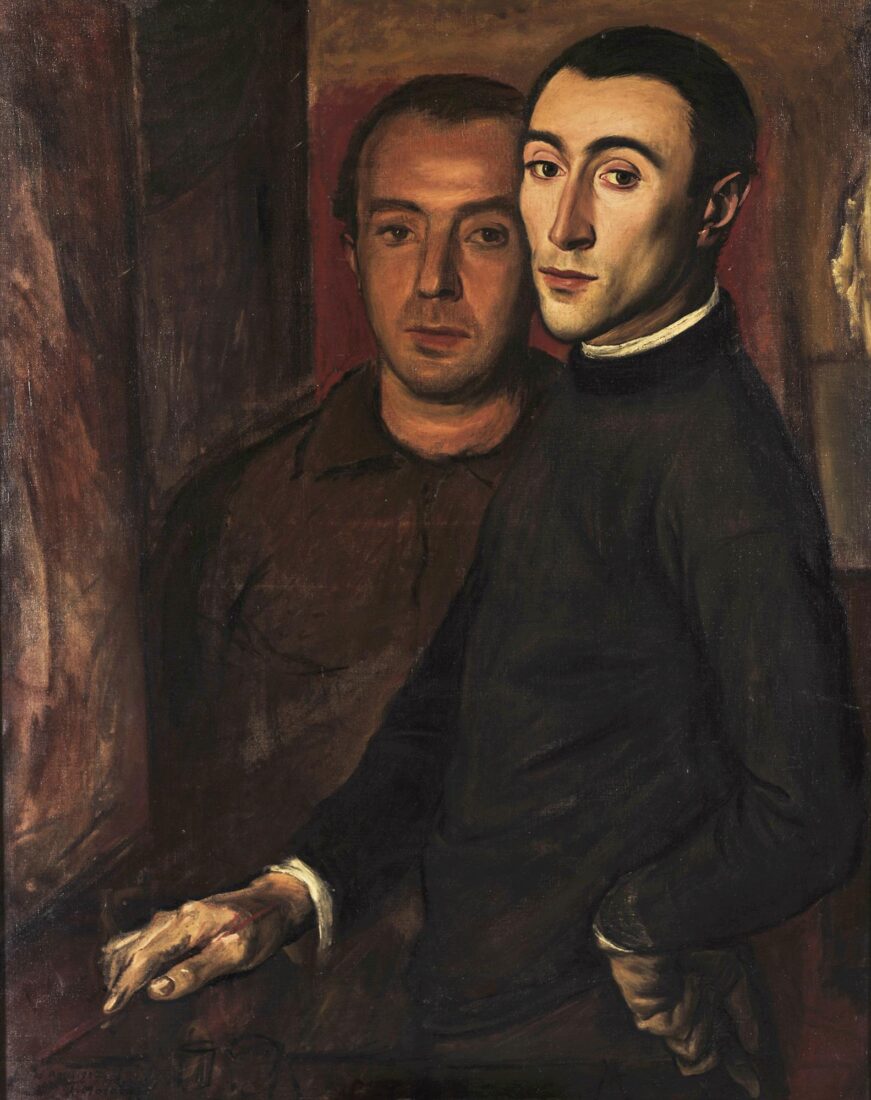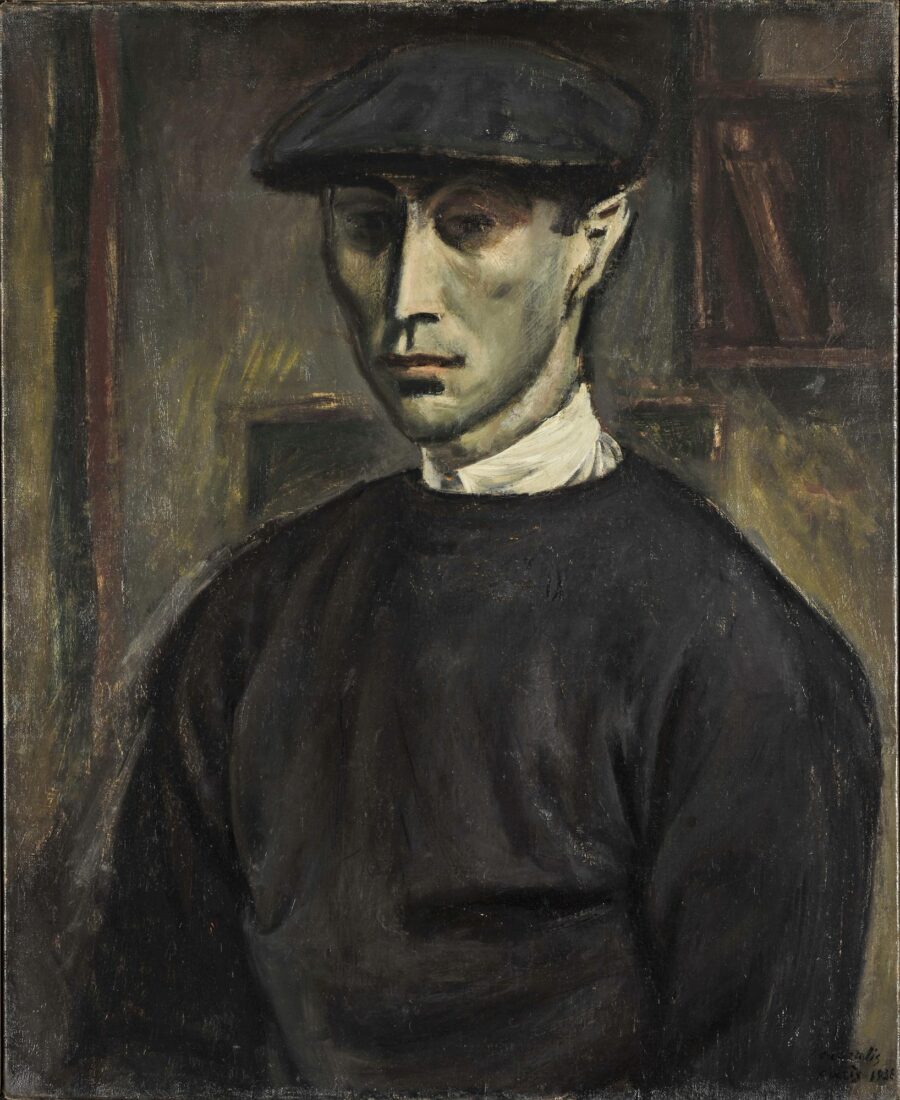

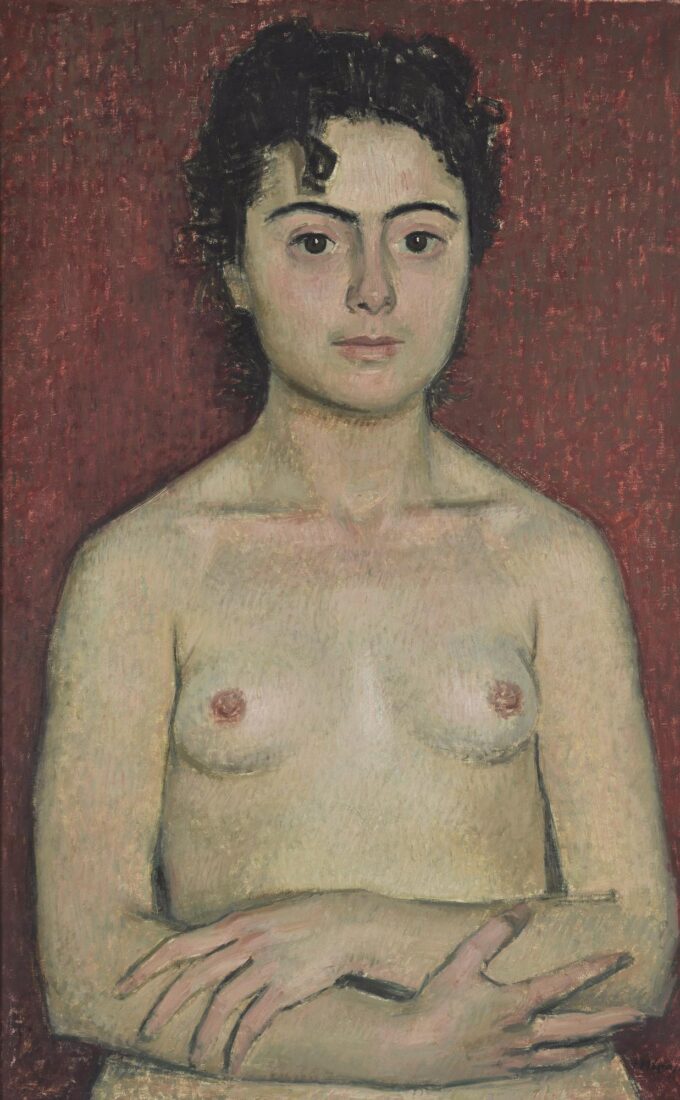
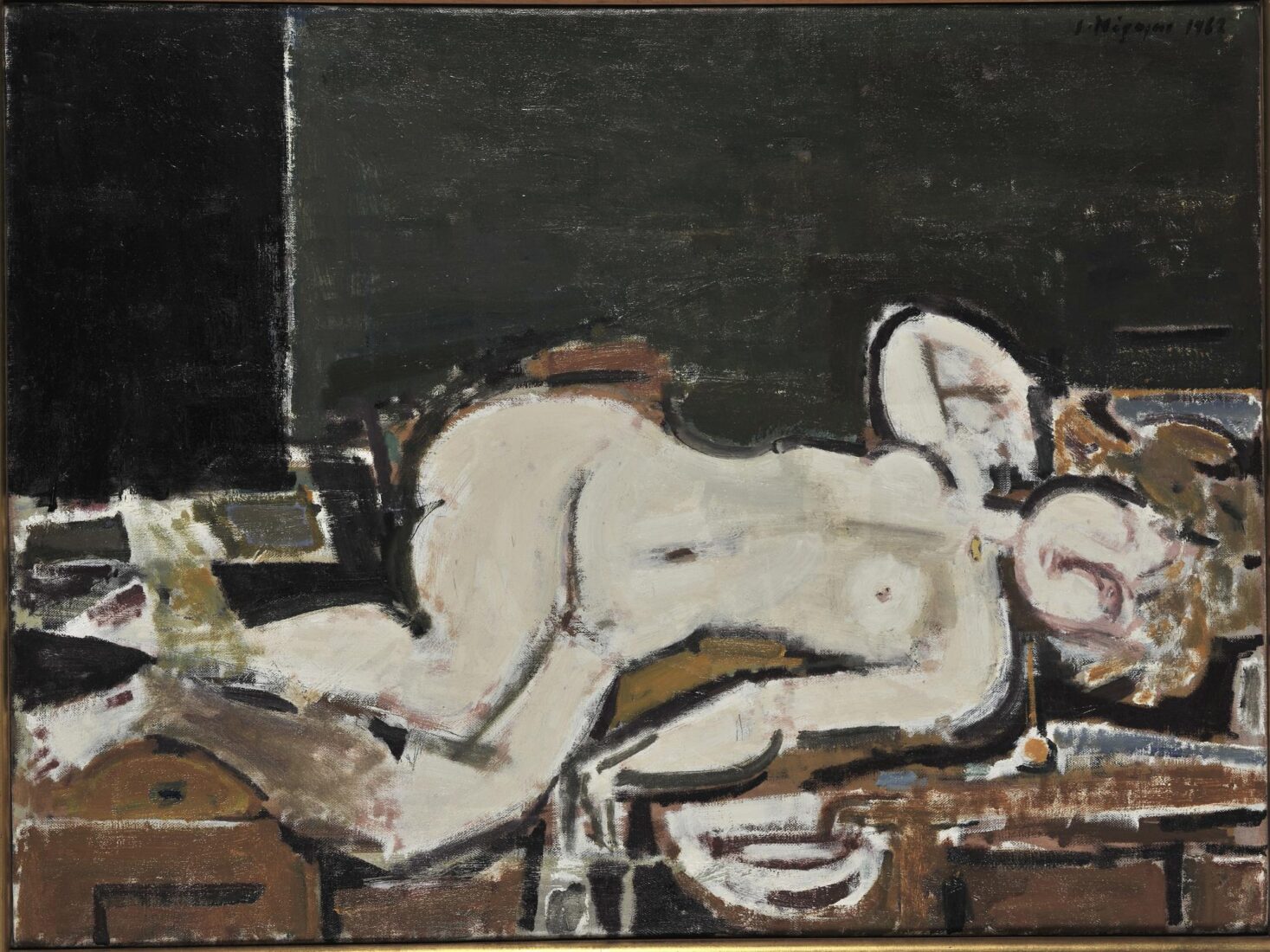
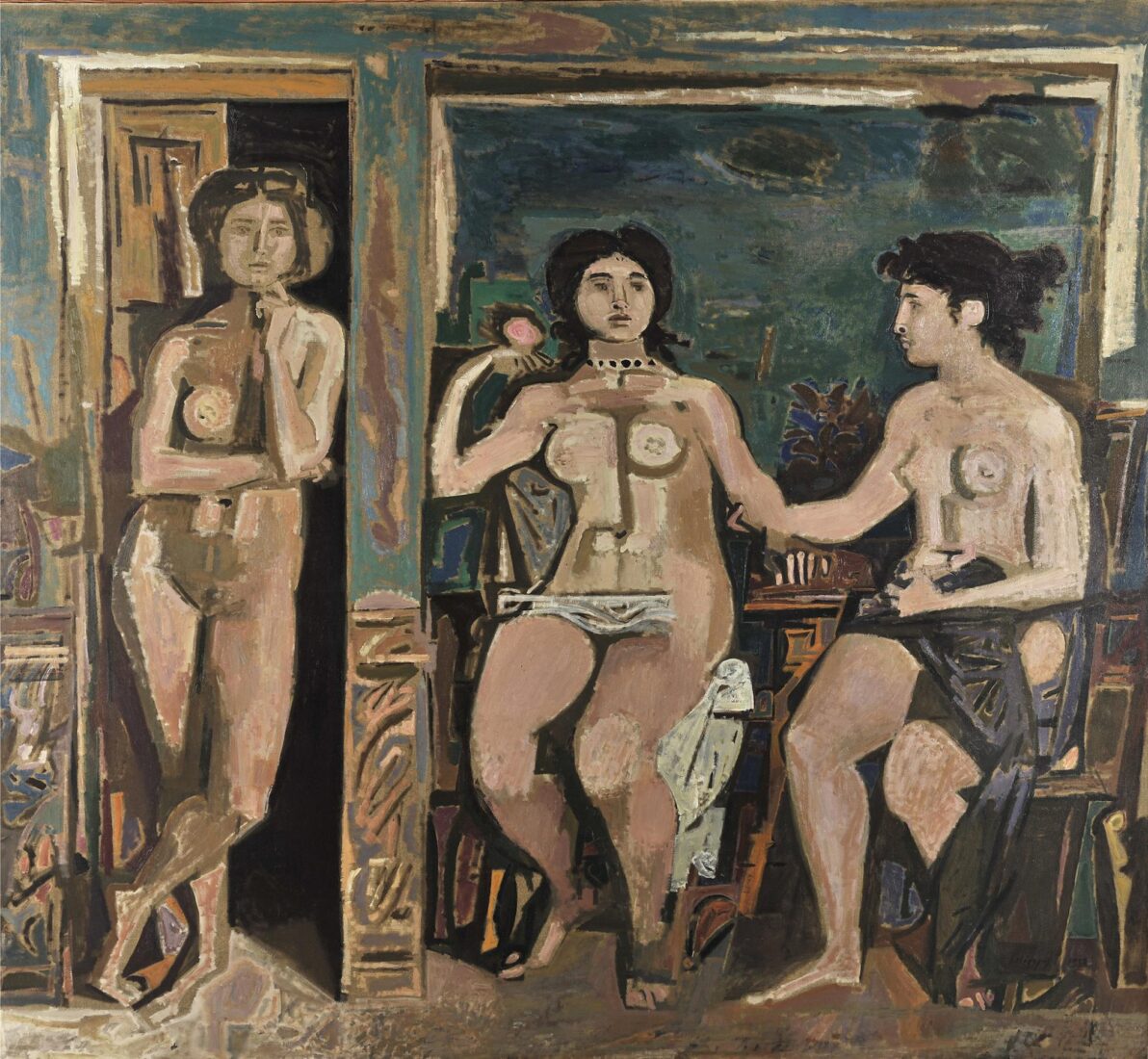
Inspired by classical stelae, “Funeral Composition” is one of Moralis’ most imposing and monumental works. The frame is provided by pillars and our familiar half-open door, in front of which stands a nude female figure in a pose familiar from classical statuary, that is, with her legs crossed in contrapposto. The position of the arms is also well known from antiquity. Two other nude female figures are portrayed seated hand in hand. Moralis has moulded the strong nude bodies in the Byzantine manner, using a brown foundation layer, lighter spots and highlights. The colour scheme of the work also seems to be in accordance with the Byzantine palette, which the artist nevertheless called Polygnotian, that is, inspired by the 5th-century painter Polygnotus. The colour units have been arranged in geometric shapes forming a puzzle, reminiscent of Cubist* painting. The entire composition – full and empty areas alike – is calculated so that equally calculated geometric shapes are created. This magnificent work exudes a serene melancholy, a sober contemplation on the flourishing youth of these girls and death awaiting.
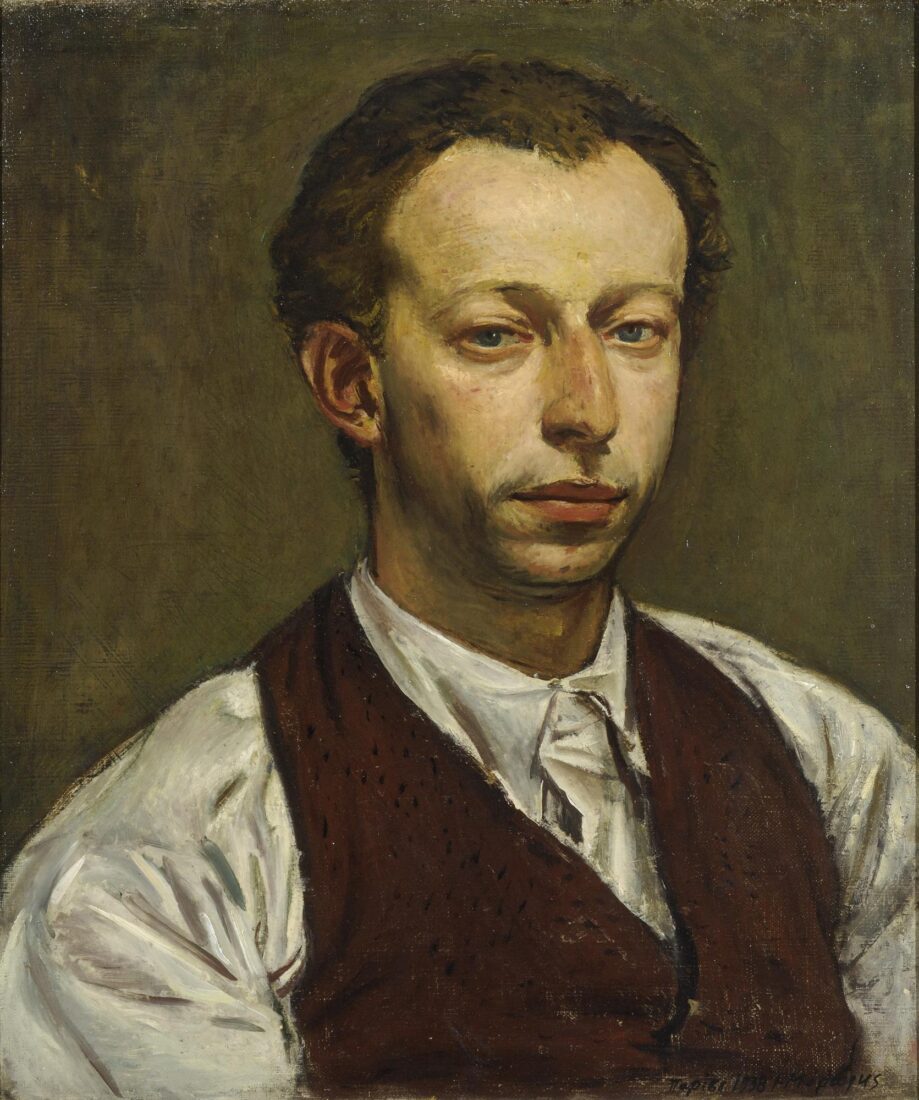
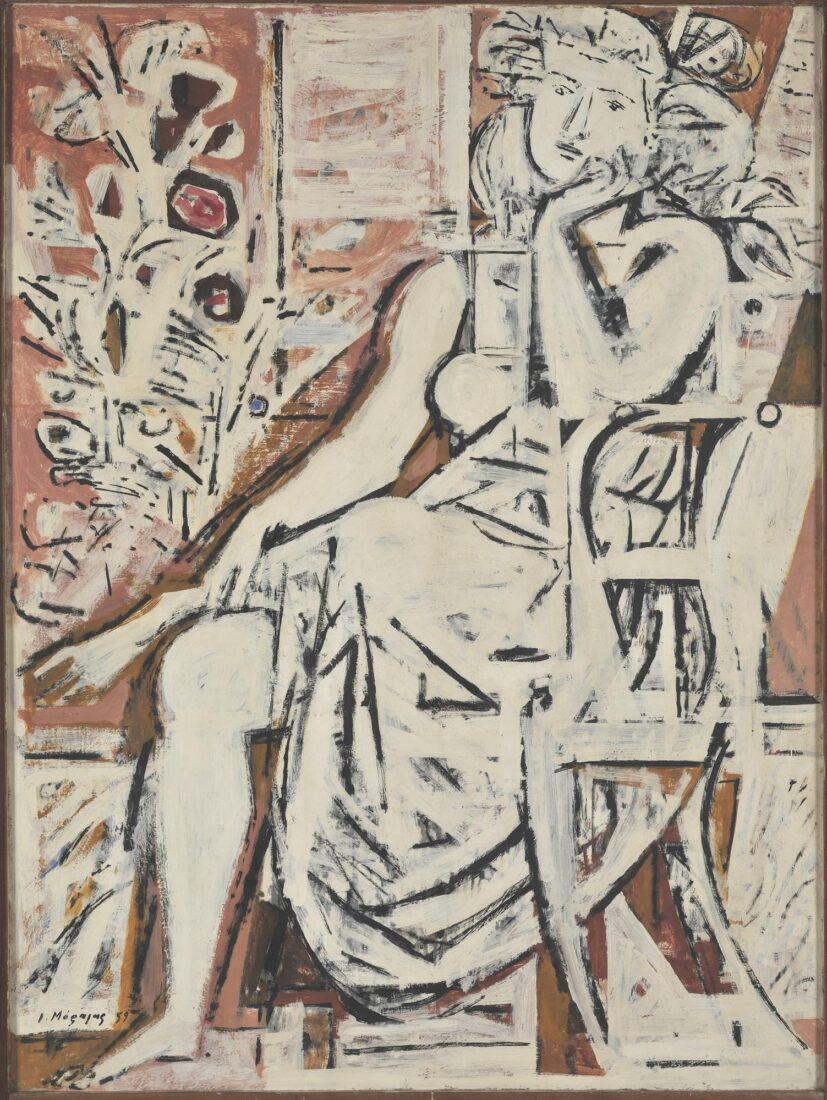
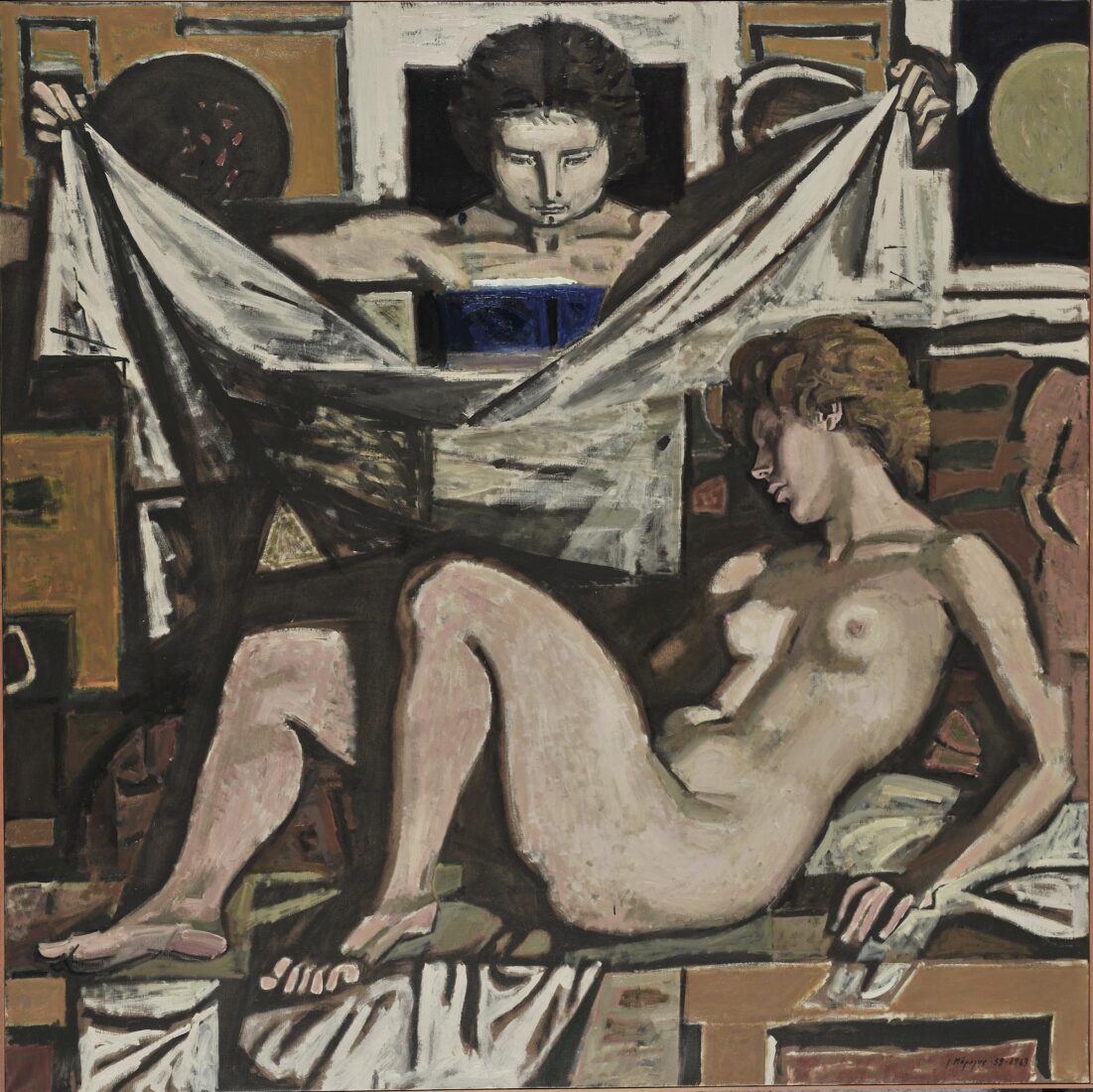
Funeral Composition III” is yet another of the artist’s imposing funeral compositions. A nude girl, dead or dying, is lying in Danae’s pose, used by Renaissance* artists, such as Tiziano. An angel with black wings is about to cover her with a white sheet-shroud. Here, too, the depthless setting is defined by vertical and horizontal lines. Every element in the composition has been arranged into geometrical shapes. Modelling once again follows the Byzantine manner. A dark foundation layer, lighter skin tones, highlights. Brown, sienna, ochre and white prevail. The classical mood, the emotional distance – that is, the artist not expressing his feelings – monumentality, silence, sober sorrow, a meditation on love and death, all contribute to a true masterpiece.
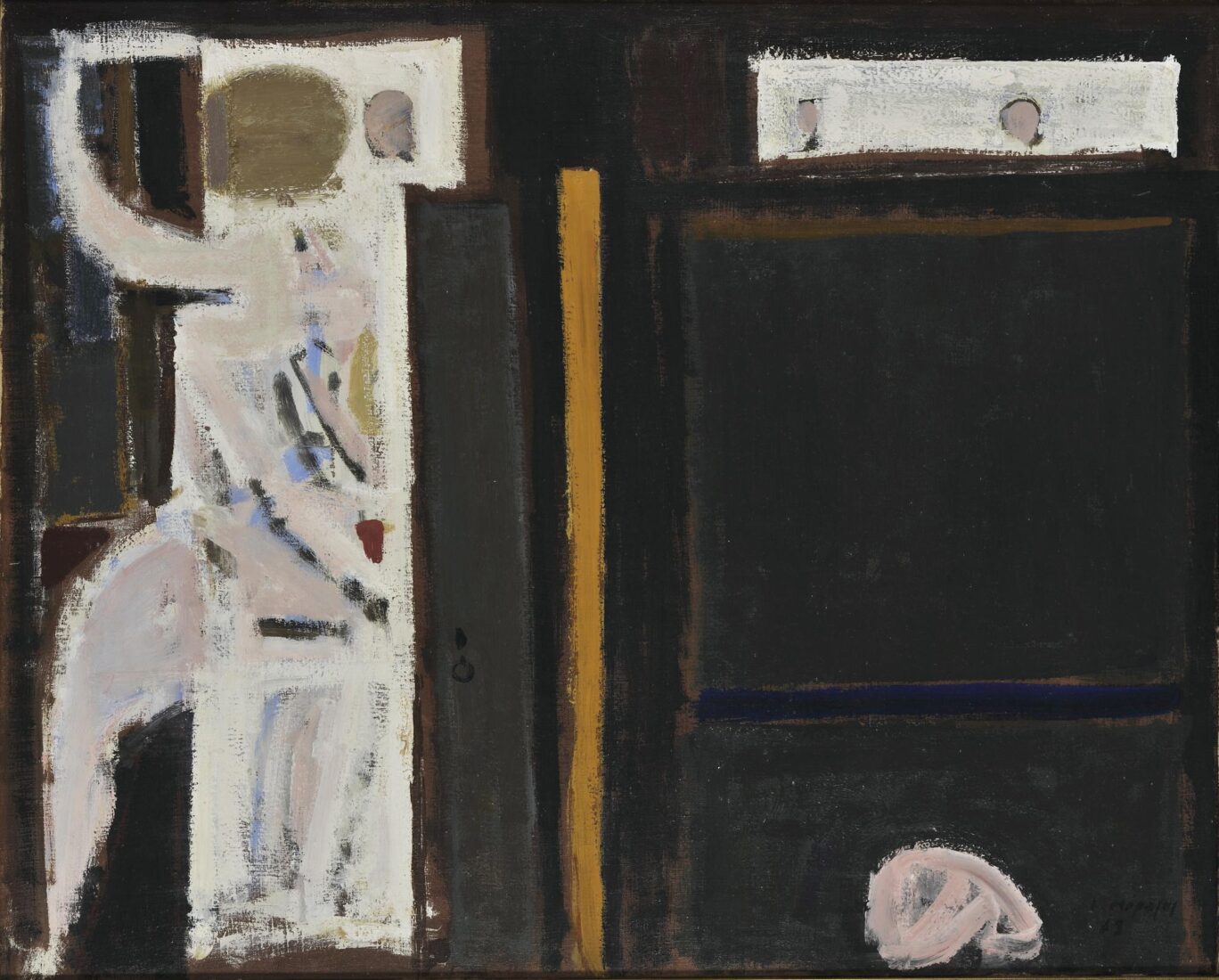
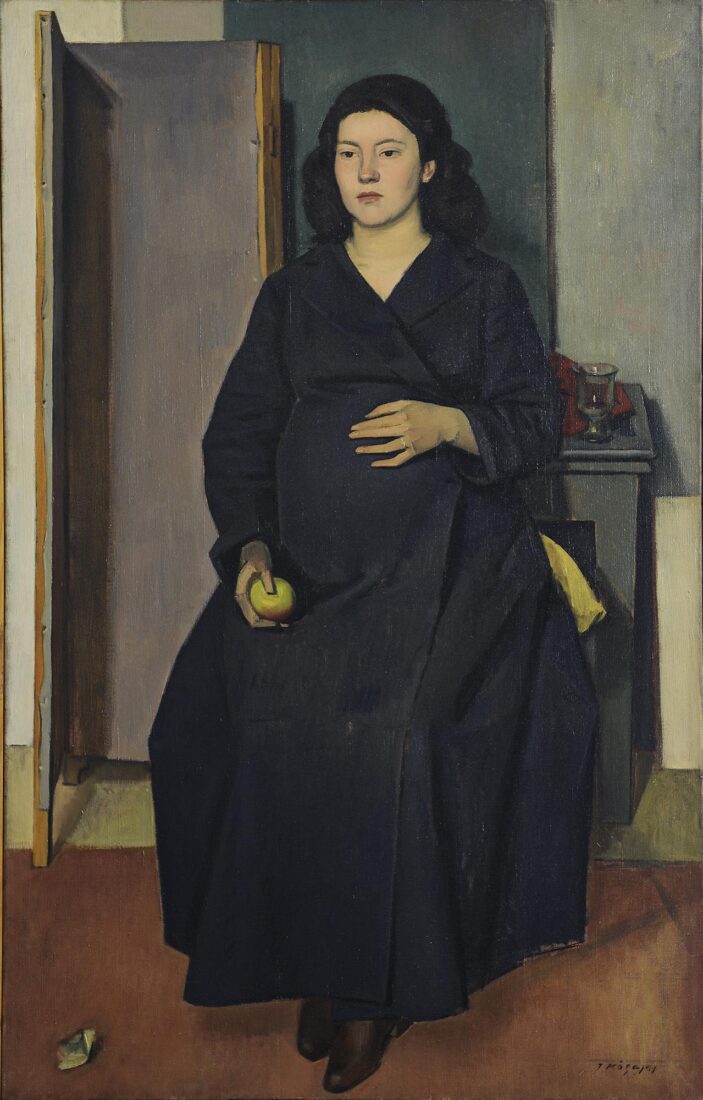
The “Pregnant Woman” portrays the sculptor Buba Lymberaki, now the artist’s wife, carrying his son. She is seated in a setting without depth, defined by planes parallel to the painted surface. These are characteristic of classical art. The pregnant woman is dressed in an austere black robe with violet tones. In her right hand she is holding an apple, a symbol of fertility, while her left hand rests on her womb in a protective gesture, emphasising the late state of her pregnancy. Her eye, hypnotized, focuses on infinity as if contemplating the mystery of the life she is carrying. The way the floor has been rendered, the geometrical arrangement of the background – in which vertical lines prevail –, the unadorned geometrical articulation of the figure, economy in the colour composition, all these traits make this a classical painting. Never ceasing to be the full-body portrait of an individual, indeed a loved one, the Pregnant Woman becomes a timeless symbol of fertility. Also one of the markings of classical art, another admirable quality of Moralis’ art is the artist’s emotional distance from his subject, even though it is one of great intimacy.
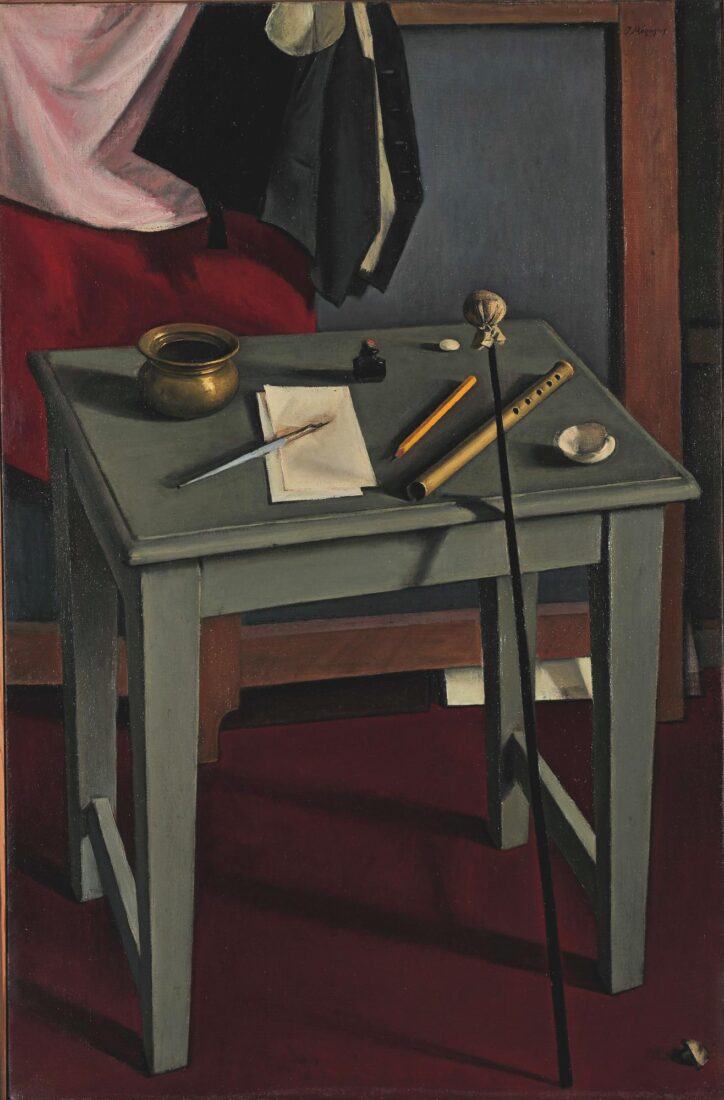
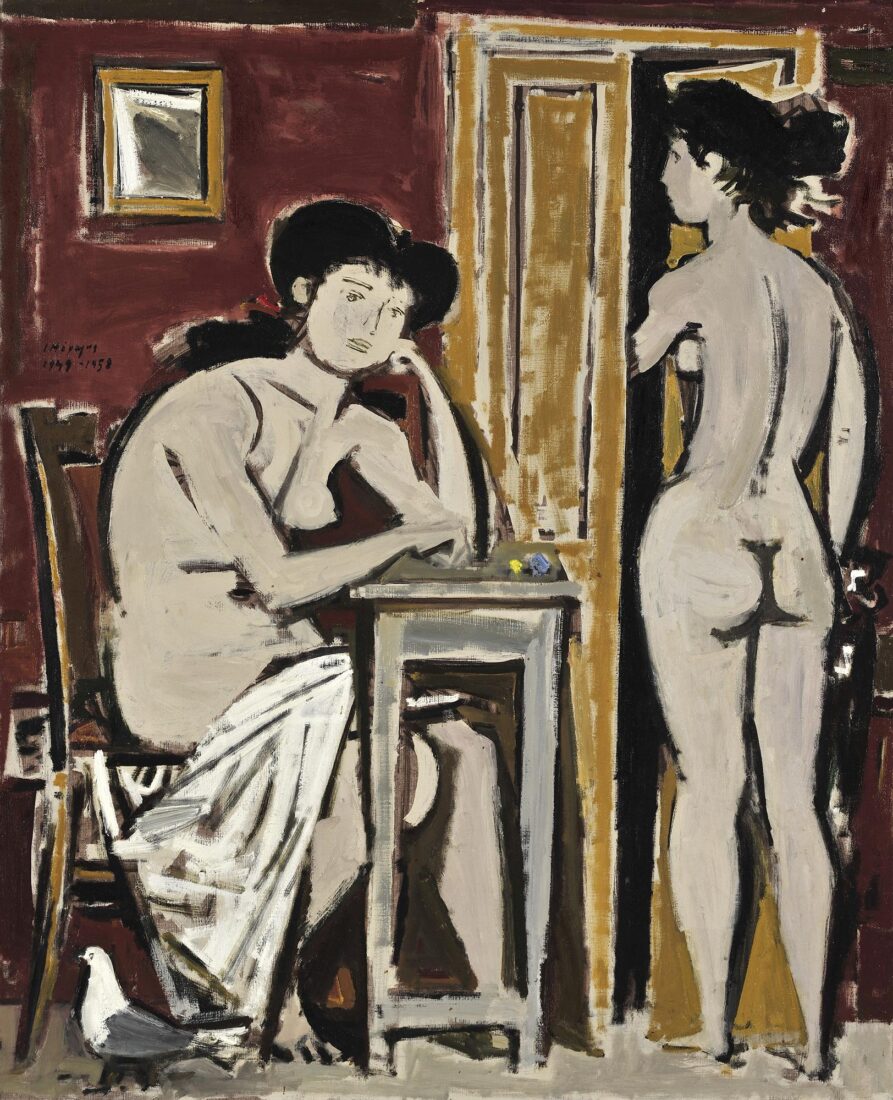
According to Yannis Moralis himself, “”Composition I”” introduces the artist’s series of Funeral Compositions. He has revealed that he dreamt this scene and captured it on paper as soon as he woke up so that he could take it up at a later time. Funeral Compositions are inspired by Attic funerary stelae, with which they share certain characteristics: In stelae, two or three figures are depicted — one of them seated, identified with the deceased — also in a depthless setting. Their pose is meditative, expressive of restrained sorrow. In Moralis’ funeral compositions, women of a young age prevail, as they do throughout his work. The “”Mystery Villa”” in Pompey is another of his sources of inspiration.
Here, the setting is defined by the door frame and a mirror hanging on the wall. The depth is just enough for the table to fit, against which the seated, meditative and sorrowful girl is leaning. The other nude girl has already half-opened the door, about to leave. This is a hint of death. The work has been sketched in forceful, assured outlines, which moreover serve to suggest volume, as chiaroscuro is totally absent. The colour harmony of the cherry-red wall and the yellowy ochre door, against which the light pink flesh of the nude bodies projects, is effective and free of all superficiality.
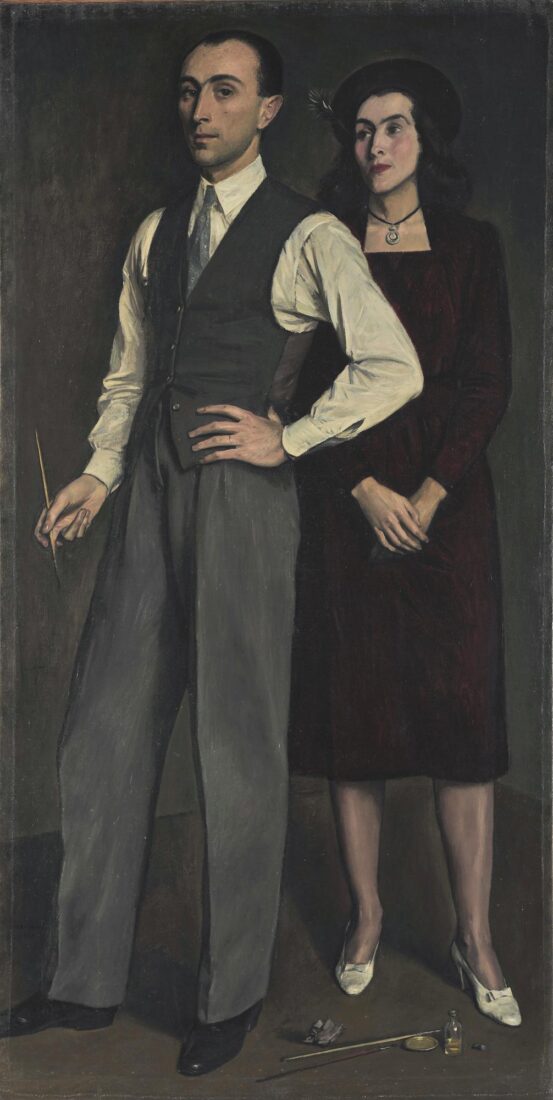
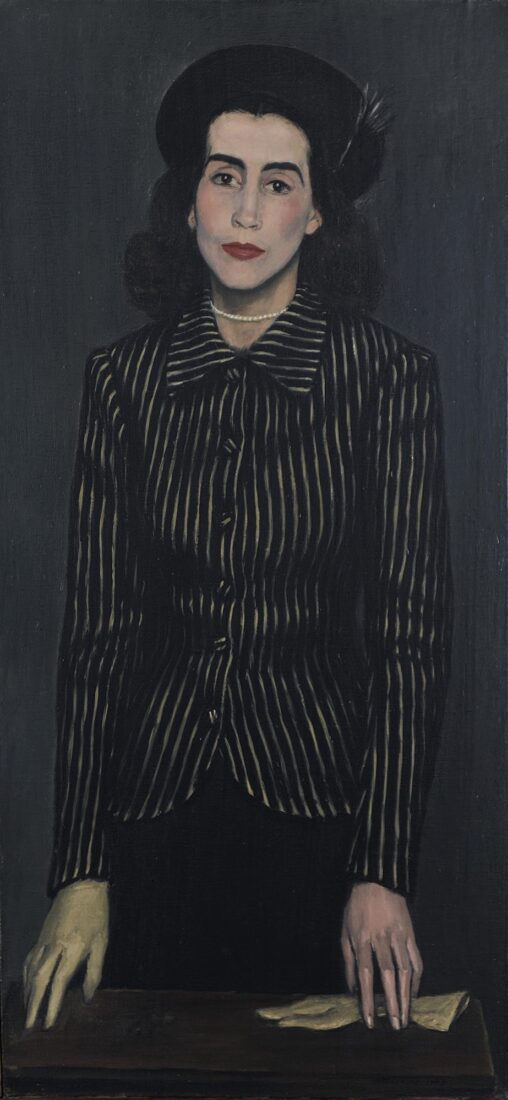
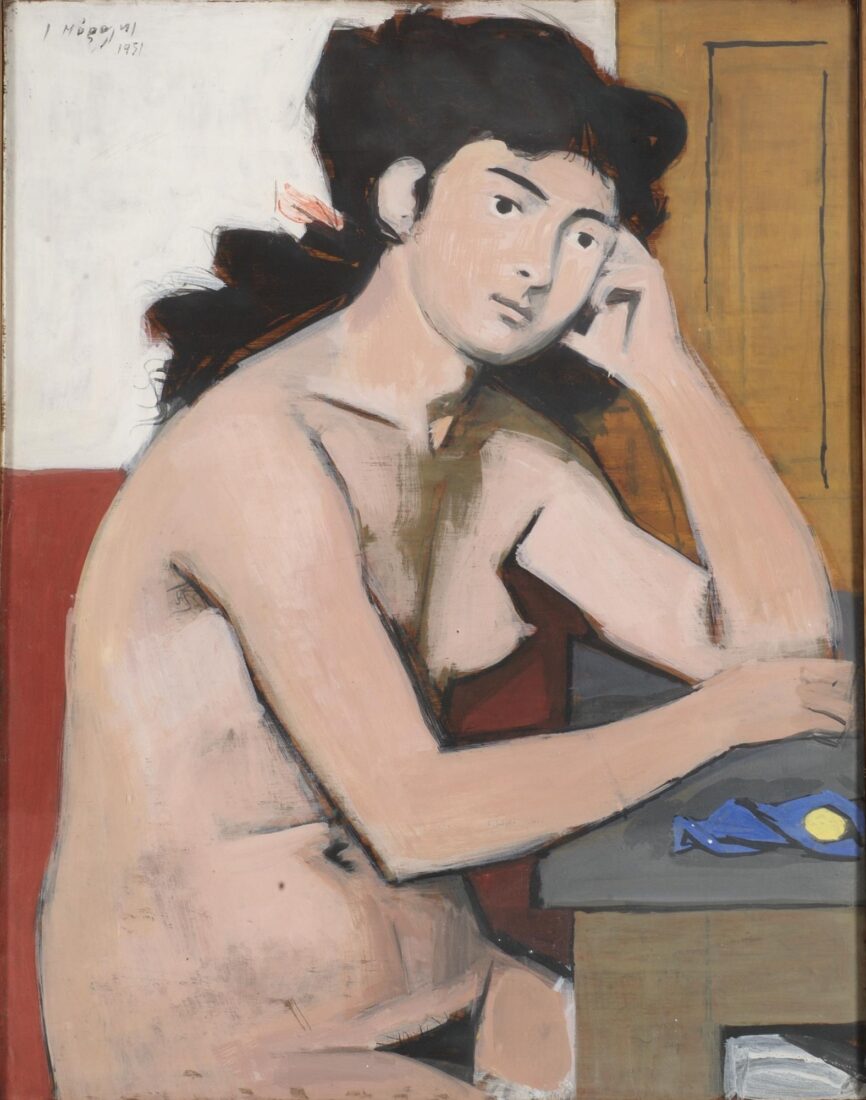
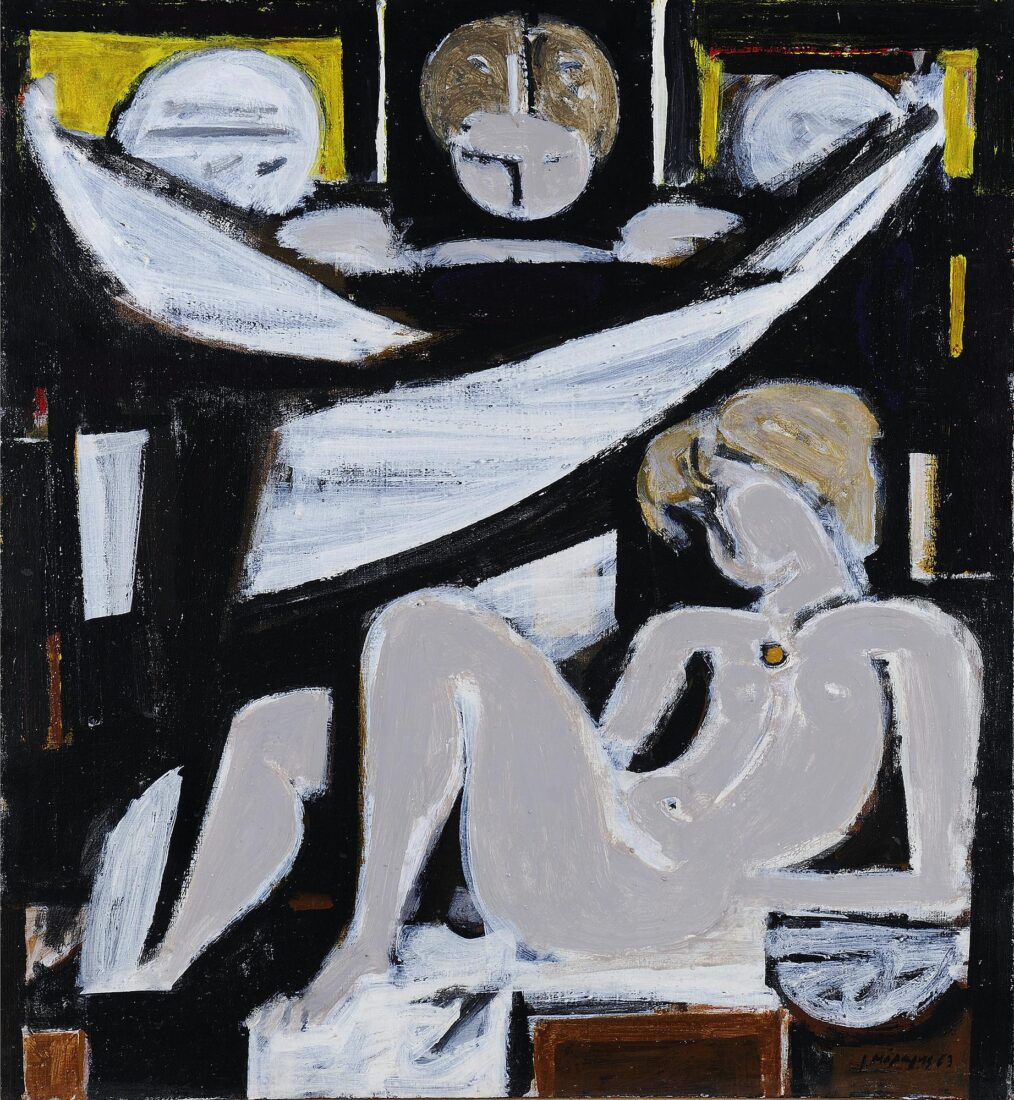
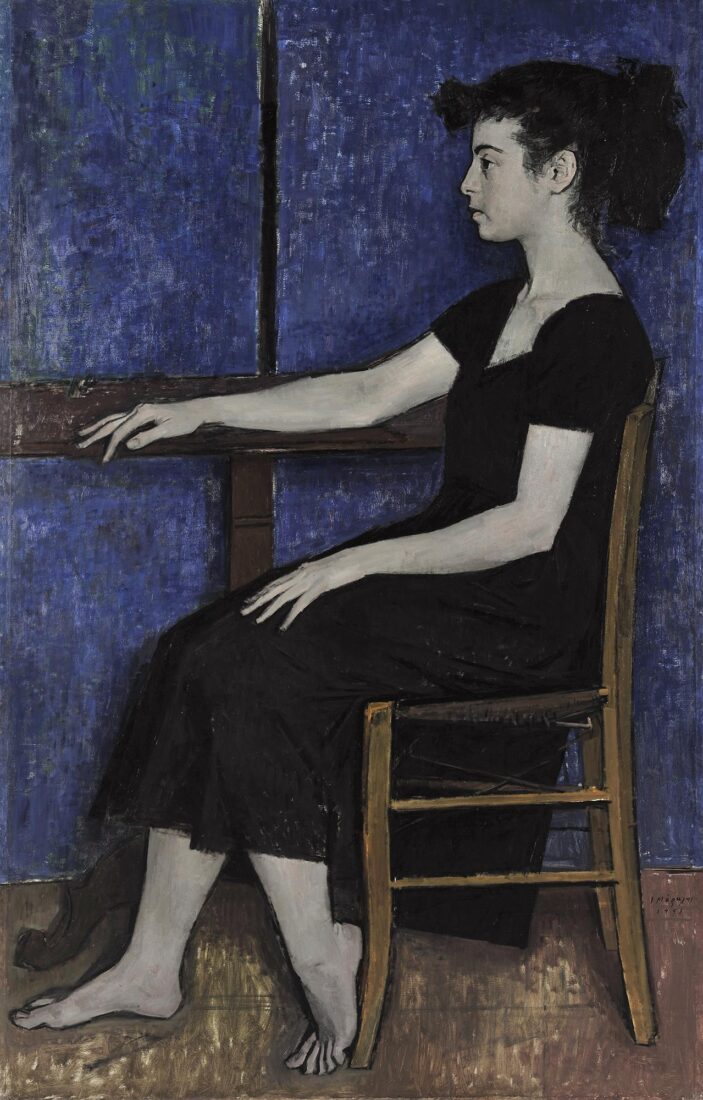
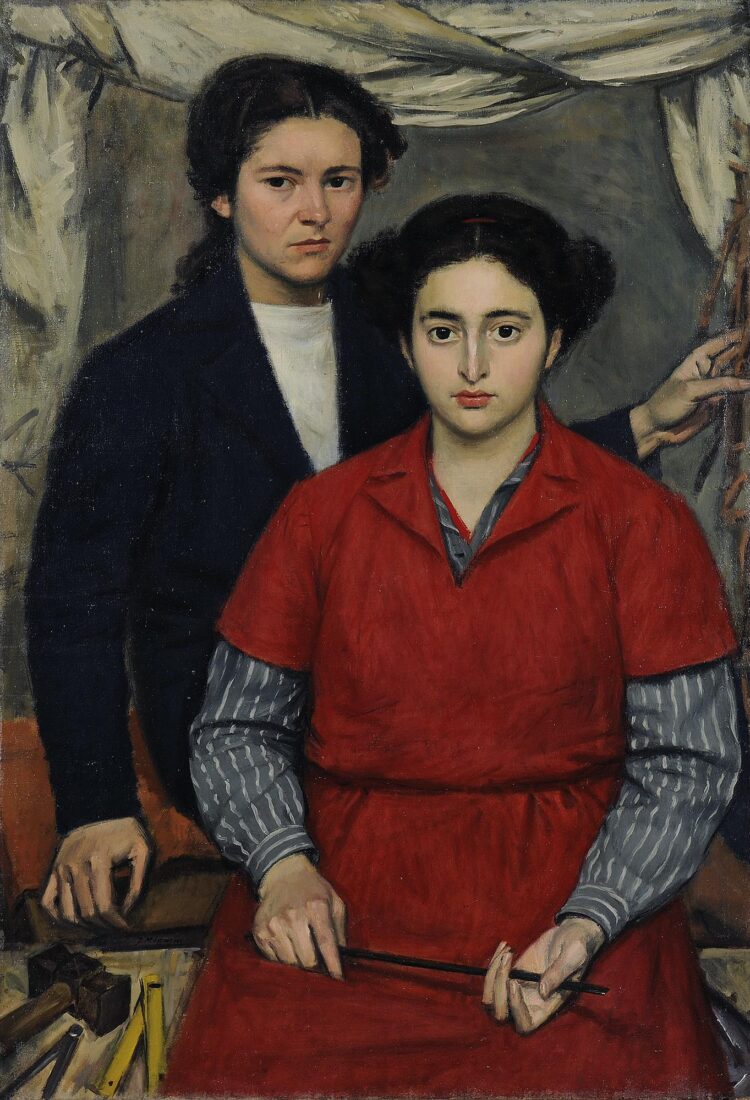
“”Two Girl Friends”” is one of the paintings inspired by the Fayum tradition as well as Renaissance portraiture and Derain’s works in a similar vein. It unmistakably carries the classical spirit of Moralis’ art. It also presupposes his lessons from Cubism in specific details. The two friends are young sculptors: Buba Lymberaki, who was to become Moralis’ second wife, and Natalia Mela (in the red dress). The artist has set them in frontal poses in a space without depth, enclosed by a screen. The pose, the gaze – mesmerising the viewer – time, which seems frozen, even the manner in which the figures have been painted, all invoke eternity: the privilege of classical art.
The painting background is greenish, adding glow to the red dress (red is the complementary colour of green). Lymberaki’s black coat, her white blouse, the other girl’s grey striped shirt, all add to the austere harmony of the composition, further enhancing the only vivid colour, red.
